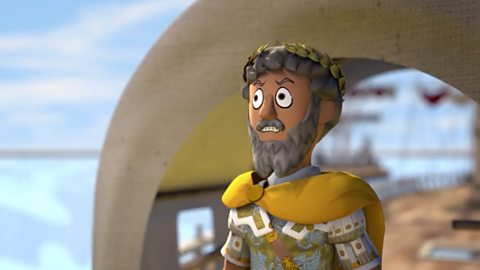When did the Romans first invade Scotland?
The Romans invaded Caledonia (Scotland) in 79 AD. Caledonian tribes pushed back and fought against the Romans in a famous battle called Mons Graupius in 83 AD. But who won and did victory last?
Find out about how the Romans invaded Scotland.
ANITA: The Romans in Scotland, Agricola and the first invasion of Scotland.
Hello, my nameÔÇÖs Anita, my mum's a history professor and my dadÔÇÖs an engineer, he knows all about building things. IÔÇÖve got a project for school about the Romans and IÔÇÖve got one questionÔÇŽ
What has this field got to do with the Romans?
MUM: The Romans built a massive camp here once.
DAD: Bigger than 70 football pitches! Like a town appeared overnight, built by hand.
ANITA: Why were they here?
MUM: Well, historians arenÔÇÖt sure. But I like to think a mighty battle called ÔÇśMons GraupiusÔÇÖ took place here, a long time ago.
The Romans had invaded Britain before, the first small invasion was led by Julius Caesar in the year 55 BC. 88 years after that in 43 AD, there was a much bigger invasion. Over the next 34 years the Romans took control of more and more land. And by 77 AD the Romans ruled all of what we now call England and Wales.
In 79 AD a new Roman governor called Agricola led his army of Roman legions north into what we now call Scotland. Until, in summer 83 AD, an army of Caledonian tribes gathered under a Chieftain called Calgacus.
At last! What Agricola wanted, a proper battle!
Agricola kept his best men at the rear, and sent 11,000 infantry, archers and cavalry out in front.
Facing them were 30,000 Caledonians. Led by their Chieftain on a war chariot.
Calgacus gave a great and rousing speech to his people!
CALGACUS: To robbery, slaughter, plunder, they give the lying name of Empire! They make a desert and call it peace!
MUM: At least, thatÔÇÖs what the Roman historian, Tacitus SAID heÔÇÖd said.
The Caledonian chariots charged! But their lines were broken and scattered by arrows. The Roman cavalry chased the chariots away. And then the Roman infantry cohorts pushed up the hill.
DAD: Pushed together by the large Roman shields, the Caledonians didnÔÇÖt have enough room to swing their swords and couldnÔÇÖt easily run away.
MUM: The historian, Tacitus, wrote that 300 Roman soldiers died. Of the Caledonians, 10,000 he said were killed! The survivors ran away into the forest.
Agricola had won and even started to build huge forts in the land of the Caledonians. But within two years of his victory he was called back to Rome.
ANITA: All that for nothing?!
DAD: DonÔÇÖt bite off more than you can chew. Which reminds meÔÇŽ ice cream?
ANITA: Two scoops?
MUM & DAD: One!
Why did the Romans attack Scotland?

Through their trading links, the Romans knew that Britain had good supplies of valuable resources such as tin, lead, and gold.
Controlling Britain would secure those resources for the Roman Empire - and controlling Scotland was a part of that plan.
In 55 BC they launched an invasion and took control of southern England. Over the next seventy to eighty years they pushed further north.
They defeated the tribes that lived there and built forts and camps to control those areas.
With most of England and Wales under Roman rule, in 79 AD the Roman general, Agricola, marched his army north into Scotland.

How did the Scottish tribes fight back?
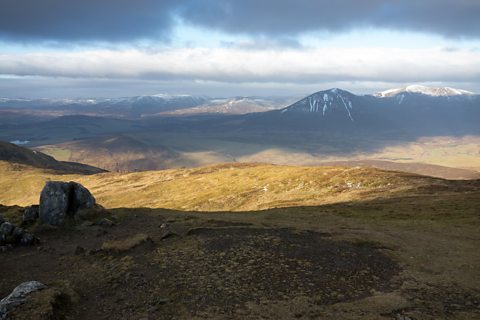
Fighting alone, the Scottish tribes didnÔÇÖt stand a chance against the well-trained Roman army. To beat them, they needed to work together. In 83 AD, this is just what happened.
The Scottish tribes, under the leadership of a tribal chieftain called Calgacus, formed a huge army. In 83 AD they met Agricola's army at what would be called the Battle of Mons Graupius.
All we know of the battle comes from the Roman historian Tacitus. According to him a Roman army of fifteen-thousand men fought a battle against a tribal force twice as large.
The exact location of the battle is not known but it was probably somewhere in the Grampian Mountains in the north east of Scotland. Tacitus wrote that after fierce fighting that saw thousands of tribes men killed, the Romans were victorious.
With the Caledonian tribes defeated, it seemed like the Romans now controlled Scotland, too.

Why did the Romans suddenly stop?
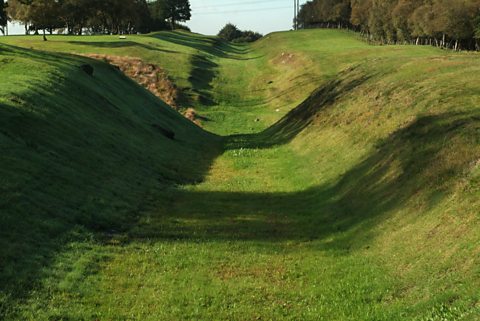
After victory at Mons Graupius, General Agricola pushed north. He may have got as far as Inverness, as there is a possible Roman fort at Cawdor, just north of the city.
However, before he could finish the job of finding and beating the remaining Scottish tribes, Agricola was called back to Rome.
In his absence, the Roman forces pulled back to the south of Scotland and built large defensive walls to protect the land they did control.
One of the best example of a Roman defensive wall is the Antonine Wall. It is thirty-seven miles long and runs from the Firth of Forth to the Firth of Clyde across the Central Belt of Scotland.


Key words
- Antonine Wall - the Antonine Wall runs across Central Scotland for thirty-seven miles from the Firth of Forth to the Firth of Clyde.
- Agricola - Agricola was the Roman general who led the invasion of Scotland.
- Calgacus - Calgacus was the name given to the leader of the Caledonian tribes who united to fight the Romans.
- Mons Graupius - this was the name of the place where the Romans defeated the Scottish tribes. We don't know exactly where this was but it is thought to be in the Grampian Mountains.
- Tacitus - was the Roman historian who wrote about Agricola's invasion of Scotland. Most of what we know about the Scottish tribes comes from his records.
More on Romans
Find out more by working through a topic
- count4 of 9
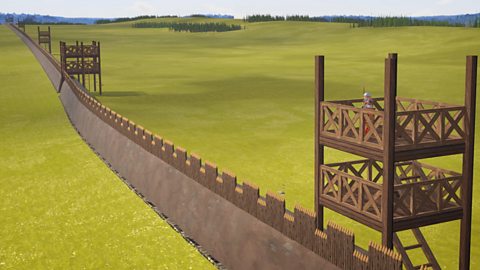
- count5 of 9
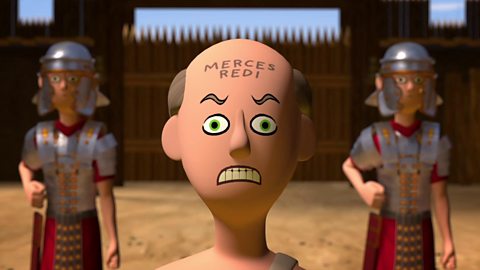
- count6 of 9

- count7 of 9
